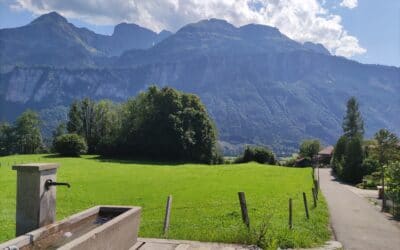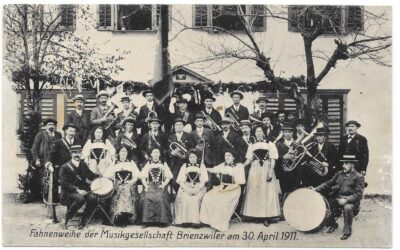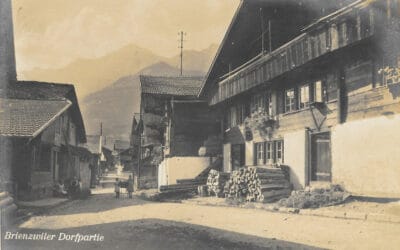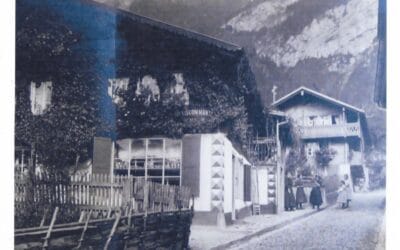Church
The small, cozy wooden church with 160 seats was built with contributions from the canton and the Synod Council, as well as countless volunteer hours from the local community, and was consecrated in 1940.
The building materials primarily come from the region, such as the timber from the municipality’s forests. The stairs and masonry were hewn and used from granite stones found in boulders that were carried by the Aare Glacier from the Grimsel during the Ice Age. An Italian, along with his helpers, crafted the stair treads, floor slabs, and masonry stones from the irregular blocks. In the forest behind the Mattenhaus at the open-air museum, we can still find a split boulder today.
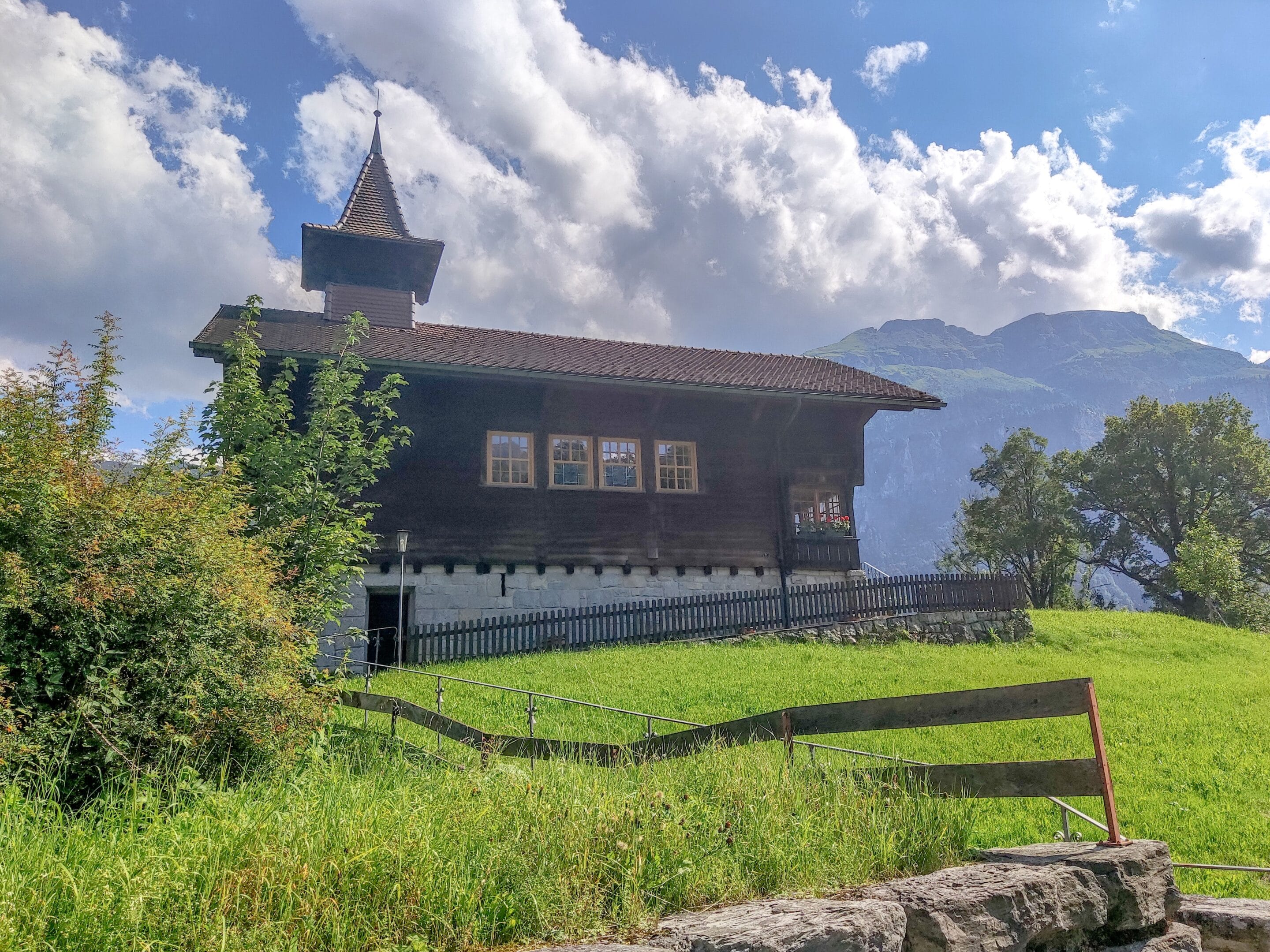
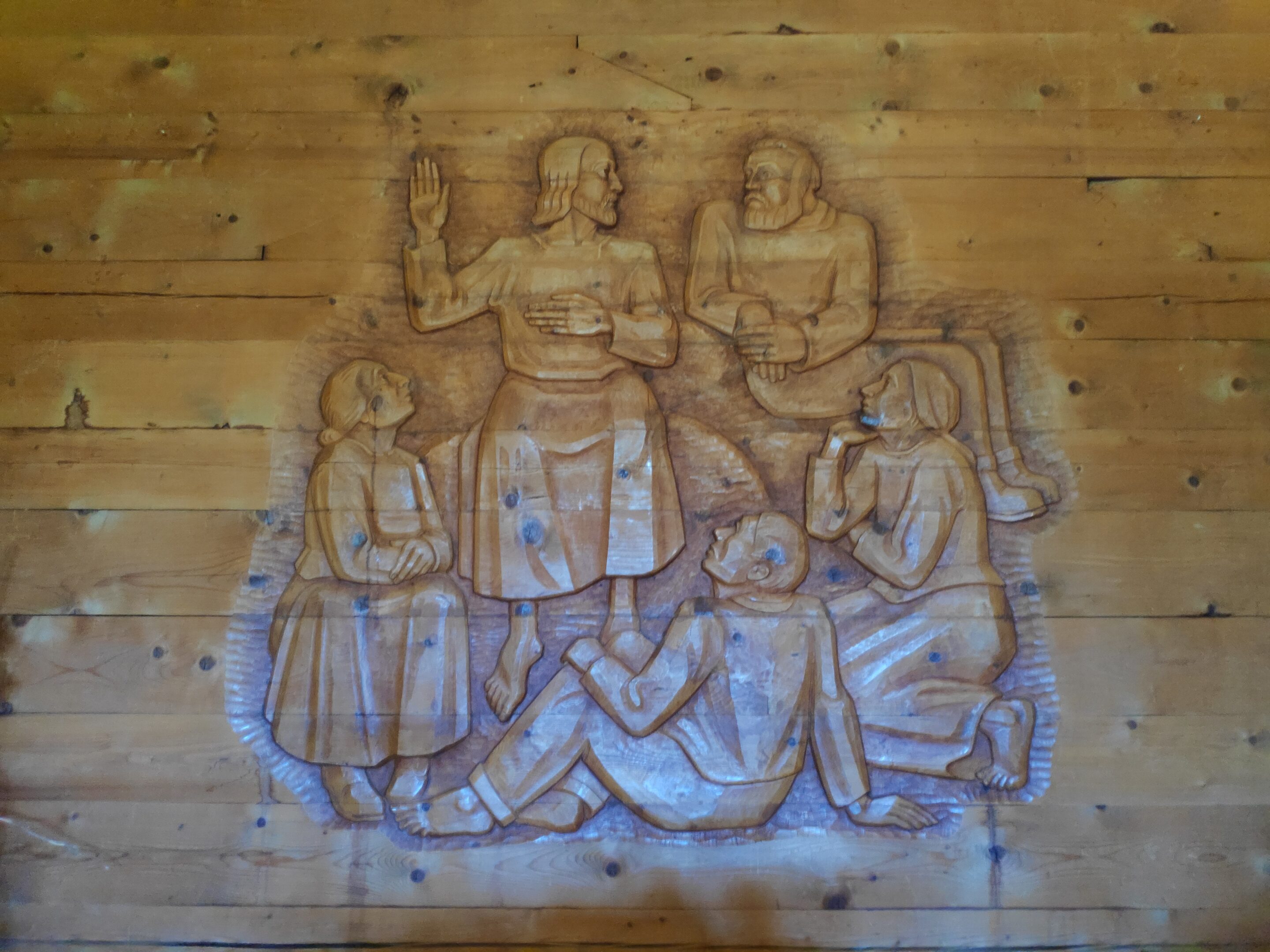
The Nave
The nave is adorned with a wooden relief on the theme of the Sermon on the Mount, which the young wood sculptor Werner Amacher was allowed to carve directly into the wood paneling at that time. The inscriptions on the wooden beams were created by Hans Huggler-Blatter.
On the open wall next to the pulpit, there is a depiction of the Lord’s Prayer, which was drawn by Tissens Menk and presented to the church.
The bell was purchased in the Emmental for the price of CHF 450.00. The children had the honor of parading it through the village in a ceremonial act before it was hoisted onto the tower.
Beautifications
The Catholic church tower at the Reformed church is a unique structure. Such steep tower roofs are not easy to construct, which is why a roofer from Saxony was hired. As a Catholic, he took the liberty of adding a cross to the tower upon completion. For this reason, the Protestant church in the region is the only one that features a cross on its roof instead of a rooster.
With great dedication, the local Women’s Association continuously beautified the small church whenever the financial situation allowed. The altar cloth made of burgundy velvet was personally embroidered by the president, Elisabeth Flühmann-von Bergen. In the late 1940s, the women of Wyler had the church clock installed and also donated a small organ, which was replaced in 2005 by an attractive home organ.
In the year 2000, a legacy was bequeathed to the church. Seven wood sculptors came together to create wooden representations of the Beatitudes, inspired by the relief in the chancel. However, the original texts were too long, so they opted for the dialect version of the Bernese Bible translation and adapted it into the local dialect. This resulted in the wall relief at the gallery, which each sculptor was able to shape according to their own taste.
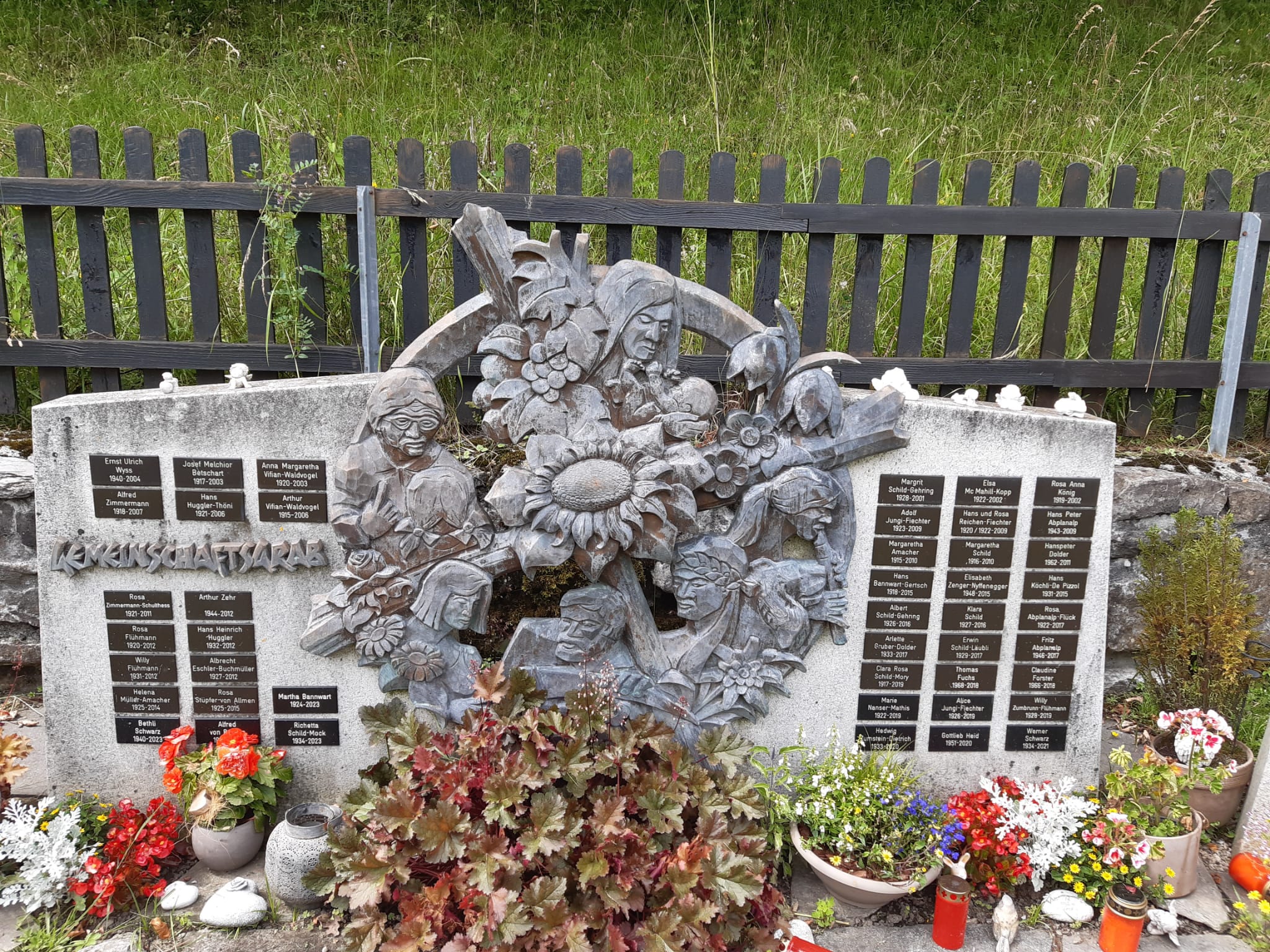
Community grave
On the common grave in the cemetery you will find the circle of life in the form of a bronze relief created by Heinz Schild.

Carvers and Wood Sculptors
The carving craft in Brienzwiler has a rich tradition. What began as a practical activity for creating various household items, such as spoons and simple tools, evolved into a lucrative side income with the rise of tourism. The talented wood sculptors of Brienzwiler gained recognition for their intricate craftsmanship, and early tourists were eager buyers of these souvenirs, which they took home as tokens of their Swiss journeys. Many carvers are still active in their “Budiigen” (an Alemannic Swiss derivation of the French word boutique) in Brienzwiler, continuously honing their craft over the decades. Ultimately, the profession of wood sculptor emerged from this carving tradition. The Swiss Wood Sculptor Museum in Brienz showcases the history of the carving craft and wood sculpting in the region.
Open-Air Museum Ballenberg
During the time of the first establishments of open-air museums in Scandinavia, attempts were also made in Switzerland to create an open-air museum. However, neither the plans for a “medieval Swiss town” at the Bern Historical Museum nor the discussions about whether the Swiss National Museum in Zurich should be complemented by rural structures led to any significant developments. It wasn’t until 1963 that the Federal Council appointed an expert commission to examine the establishment of a national open-air museum more closely. The site of Ballenberg was found to be the most convincing compared to other locations.
In 1978, the Swiss Open-Air Museum Ballenberg opened its doors. At the opening, 16 museum objects were presented; two years later, this number had already increased to 25, and by 1985, there were already 61 buildings. Today, more than 100 residential and ancillary buildings are situated on Ballenberg. The scientific concept of the open-air museum is based on the research conducted by the “Action Farmhouse Research in Switzerland,” which allows for a targeted and broadly supported selection of the most important characteristic house, farm, and settlement forms in Switzerland.
The open-air museum is a significant cultural, scientific, and tourist institution that attracts around 250,000 visitors from around the world each year. With nearly 200 employees who work at the museum during the season from mid-April to the end of October, it is also one of the most significant employers in the region.
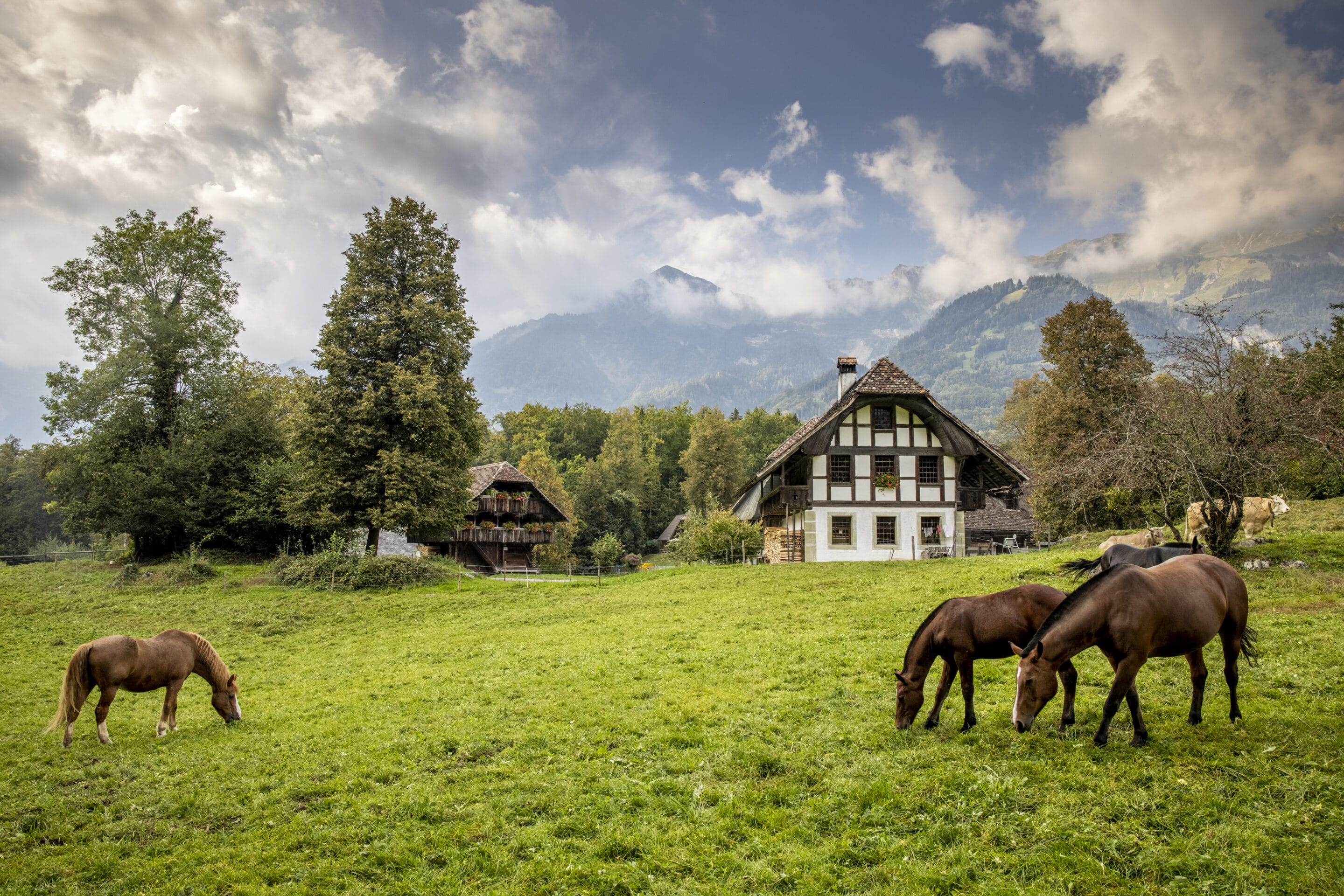
Locations of the Virtual Tour
Nature garden
Nature gardenGoethe on the Wyler BridgeIt is October 13, 1779 – three well-dressed gentlemen step onto the Wyler Bridge down in the valley. One of them would later dictate to his secretary at the Hotel Kreuz in Brienz how they marveled at the “terrifying mountain...
Griid
GriidOltschiburgSecret flight exercise behind the Oltschiburg with the Fieseler StorchOn November 19, 1946, an American Douglas C-53 (Dakota) crashed in rugged terrain at 3350 m above sea level on the Gauli Glacier. All occupants survived the crash landing in the...
Fresco Schoolhouse
Fresco SchoolhouseFresco Schoolhouse/Allmendnussen"God gave us the nuts; let us crack them together!"This saying accompanies the sgraffito at the Brienzwiler schoolhouse. It was created by Heinz Schild and his team to commemorate the construction of the new gymnasium....
Village square
Village squareHistory of the Coat of Arms“Wyler am Brünig”, as Brienzwiler was once called, has always been located on the important transit axis of the Brünig Pass. The old path led from Kienholz (Brienz) via Hofstetten to the “Schloss” district of Brienzwiler and...
Änderdorf
AenderdorfStart of the Zwergliloch TrailThe circular trail to Zwergliloch is a varied hike around Brienzwiler. Duration is approximately 1 hour. NOT SUITABLE FOR PEOPLE WITH MOBILITY IMPAIRMENTS AND SMALL CHILDRENBy Stagecoach over the BrünigThe Brünig Pass road has...








